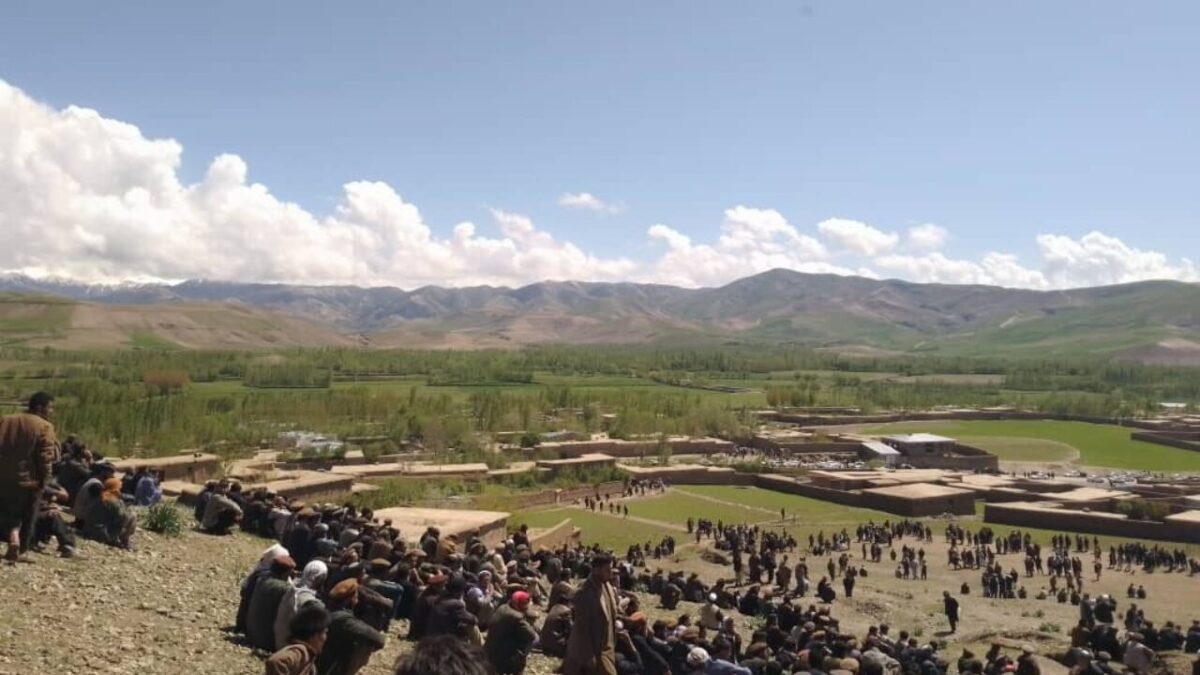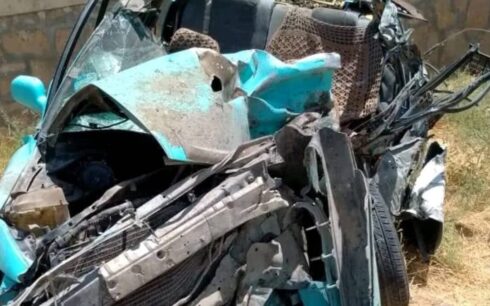KABUL, Afghanistan — Residents of Barlas village in Badakhshan’s Argu district have been kept under house arrest by the Taliban for the second consecutive day, sources told Amu. The Taliban forces have also prevented gatherings in the area, the sources said.
The Taliban’s intelligence services have detained “several civilians” from the Argu district, according to sources. The telecommunication system in Barlas village and other areas of Argu district has been cut off by the Taliban.
Barlas village, located 58 kilometers west of Faizabad, the capital of Badakhshan province, has witnessed the second round of protests against the Taliban in the province.
Sources reported that the Taliban “do not allow anyone to leave their homes.” The Taliban previously stated that these protests were against the destruction of poppy crops. The Taliban’s Ministry of Interior claimed that approximately 561 acres of land in Badakhshan’s Argu, Darayim, Jurm, Baharak, Kashm, and Faizabad have been cleared of poppy cultivation.
“561 acres of land in the districts of Argu, Darayim, Jurm, Baharak, Kashm, and the central area of Badakhshan province have been cleared of poppy crops. The counter-narcotic personnel of the [Taliban] have also eradicated 108 acres of land in Darayim district, 131 acres in Argu, 85 acres in Jurm, 60 acres in Baharak, 54 acres in Kashm district, and another 123 acres in the vicinity of Faizabad city, the capital of Badakhshan,” the statement read.
Earlier, sources explained that the Taliban have deployed hundreds of armed forces equipped with light and heavy weapons in Barlas village, following an anti-Taliban protest launched by the villagers. The source said that the reinforced Taliban forces remain in the province.
“The people of Badakhshan are pushing the Taliban back. The uprising will start from Badakhshan, and the current situation will gradually become Badakhshan-centric, extend to the north, and extend to Afghanistan. What the Taliban are doing is breaking their own power structure in the region through Badakhshan,” said Rahmatullah Bizhanpour, a political analyst.
The protest in Badakhshan against the Taliban sparked widespread reactions among Afghan politicians and the women’s rights movement. The Revolutionary Transformation of Afghan Women Movement launched a campaign in support of the protestors in Badakhshan.
“This time, the voice of justice and freedom has risen from the land of Badakhshan, calling on the people of Badakhshan to rise. They have raised their voices for freedom and demanded action,” the statement read.
Within the past two weeks, residents of Darayim and Argu districts of Badakhshan have held protests against the Taliban. The protests turned violent after Taliban forces opened fire on the protestors. So far, at least five protestors have been killed and dozens wounded due to the Taliban’s shooting.
In response, the Taliban appointed a delegation led by Chief of Army Staff Fasihuddin Fitrat to control the protest. However, this delegation has also failed to address the situation.





